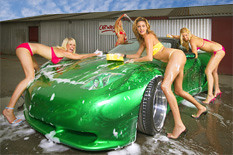 | |
| Manufacturer | Ferrari |
|---|---|
| Production | 1951–1952 82 produced |
| Predecessor | Ferrari 195 Inter |
| Successor | Ferrari 250 |
| Class | Sports car |
| Layout | FR layout |
| Engine | 2.6 L Colombo V12 |
The Ferrari 212 Inter replaced Ferrari's successful 166 and 195 Inter grand tourers in 1951. Unveiled at the Brussels Motor Show that year, the 212 was an evolution of the 166 — a sports car for the road that could also win international races.
The chassis was similar to the 125 with double wishbones in front and live axles in back. Coachbuilders included Carrozzeria Touring, Ghia, Vignale, and now Pinin Farina. The latter was an important move for the company, as Farina was already well-known and adding his styling skills would be a tremendous boost for Maranello. However, Pinin Farina was as proud as Enzo Ferrari, and neither would go to the other to request business up to this point. A mutual meeting halfway between Maranello and Turin was the negotiated solution[1]
Both 2,500 mm (98.4 in) and 2,600 mm (102.4 in) versions were built (Export and Inter models, respectively), both with a larger 2.6 L (2563 cc/156 in³) version of Ferrari's Colombo V12 engine. Like the 195, the additional displacement over the 166 was achieved with a larger bore, this time to 68 mm. Output was 150 to 165 hp (111 to 123 kW) with one or three Weber 36DCF carburetors. The short-wheelbase Export model got the more-powerful engine. 5 hp (3.7 kW) more was on the table for 1952 thanks to better cylinder heads.
A single 212 Inter, Chassis# 0223EL2[2], was fitted with the available "225" or 2.7 L Colombo V12, creating a unique model that would be properly referred to as a 225 Inter. This one-off model was given a fetching Giovanni Michelotti penned berlinetta body by Vignale.







